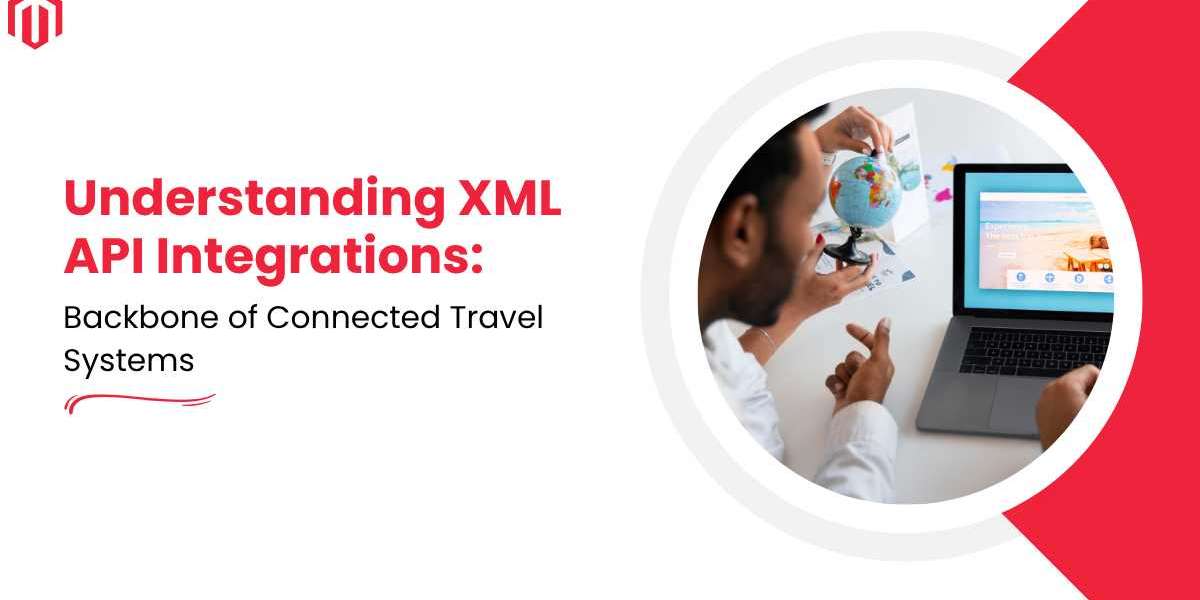In today’s connected world, travel systems rely on complex technology that enables seamless interaction between service providers and consumers. XML API Integrations play a crucial role in this ecosystem, serving as the backbone for connecting travel platforms, suppliers, and users. According to a report by Travel Technology Europe, over 85% of travel businesses use API integrations to improve operational efficiency and service delivery. By providing a standardized method for exchanging structured data in real-time, these integrations help create smoother, faster, and more reliable travel experiences.
As travelers expect instant access to information, quick booking processes, and real-time availability, XML APIs have become the core bridge for facilitating these connections. Research shows that platforms with efficient API integration experience up to 40% faster transaction processing and 30% fewer booking errors. In this article, we explore the essential role of XML API Integrations in the modern travel landscape, their workings, benefits, and best practices for their implementation.
The Rise of Connected Travel Systems
Over the last decade, travel systems have increasingly become more interconnected. From hotel bookings to flight reservations and car rentals, travel services span across multiple providers, and all these systems need to communicate effectively to deliver a unified customer experience.
The rise of connected travel systems has been fueled by the growing demand for real-time data sharing, automation, and personalization. The ability to integrate multiple service providers through APIs has been critical in making these systems more responsive to travelers' needs. XML API Integrations are often at the heart of this connected ecosystem, acting as a universal language for communication.
Real‑time Expectations of Modern Travelers
Modern travelers expect instant gratification. Whether booking flights, hotels, or activities, travelers want real-time availability, accurate pricing, and the ability to complete their bookings on-demand. This has placed a significant strain on travel systems to deliver real-time data from multiple sources, often with thousands of requests being processed simultaneously.
XML APIs provide an efficient way to handle these high volumes of real-time transactions, ensuring that travelers receive accurate and up-to-date information. By supporting structured data formats that travel platforms can easily parse, XML APIs help ensure that booking systems are fast, reliable, and scalable.
XML APIs as the Core Bridge
XML API Integrations serve as the core bridge between travel platforms (such as Online Travel Agencies, OTAs, and other booking systems) and suppliers (airlines, hotels, car rental companies, etc.). They provide a standardized method of communication, ensuring that different systems can share data seamlessly, regardless of their internal architecture.
By enabling systems to communicate in a structured manner, XML API Integrations Services streamline the process of booking, payment processing, and customer support, making them an essential part of the modern travel ecosystem.
What Is XML API Integration?
XML API Integration refers to the process of connecting travel platforms and service providers (such as airlines, hotels, and rental car agencies) via APIs that use XML (eXtensible Markup Language) as the format for sending and receiving data. XML is a flexible, machine-readable format that structures data in a way that makes it easy for systems to parse, understand, and process.
APIs using XML allow travel systems to exchange requests and responses containing critical data like flight availability, hotel pricing, car rental details, and booking information.
Supplier–Consumer Data Exchange Flow
The data exchange flow between suppliers and consumers typically follows these steps:
- Request: A travel platform sends an XML-formatted request to a supplier (e.g., an airline or hotel). This request includes structured information about the traveler’s needs, such as dates, locations, and specific preferences.
- Processing: The supplier’s system processes the request, checks availability, and applies any relevant pricing rules or conditions.
- Response: The supplier sends back an XML-formatted response containing the requested data (e.g., available flights, hotel rooms, or car rentals), including prices, availability, and booking details.
- Display: The travel platform parses the XML response and displays the data to the user in a user-friendly format (e.g., a list of available flights or hotels).
Role of Structured Requests and Responses
The use of structured requests and responses is one of the key benefits of XML API Integrations. By using a standardized data format, travel systems ensure that both parties (platforms and suppliers) can communicate in a way that is both predictable and reliable. This eliminates ambiguity, reduces errors, and ensures that all necessary data is included in each transaction.
Why XML Is Used in Travel APIs
1. Industry-Wide Standards and Schemas
XML has long been the preferred data exchange format in the travel industry due to its ability to maintain a high level of standardization. Many Global Distribution Systems (GDS) and suppliers use XML-based schemas to define how requests and responses should be structured. These schemas help ensure that all parties adhere to the same rules, ensuring consistent data formats across different platforms.
2. Validation Strength and Error Control
One of the reasons XML is so widely used is its strong validation capabilities. XML Schema Definition (XSD) allows systems to define exactly what types of data are allowed in a request or response. This means that errors in data, such as missing fields or incorrect values, can be detected and corrected before the transaction is processed.
For instance, a hotel booking API can ensure that the check-in date is always earlier than the check-out date, avoiding potential issues before the booking is made.
3. Compatibility with Legacy GDS Platforms
Many established travel systems and legacy Global Distribution Systems (GDS), such as Amadeus, Sabre, and Travelport, have long used XML for data exchange. This makes XML an essential format for travel companies, as it provides compatibility with these legacy platforms, which continue to dominate the industry. XML API Integrations offer a reliable way to connect with these systems, ensuring that companies can access the rich data they need without requiring costly system overhauls.
How XML API Integrations Work
1. Step-by-Step Request Cycle
The basic process for XML API integration typically involves these steps:
- Initialization: A request is initiated from the travel platform, often as a search query (e.g., “Find a hotel in New York from July 1st to July 5th”).
- API Call: The platform sends an XML request to the supplier’s API endpoint, formatted according to the supplier’s specifications.
- Processing: The supplier processes the request and determines the availability of the requested service, such as hotel rooms or flight seats.
- Response: The supplier returns an XML-formatted response with data such as room availability, pricing, and other details.
- Display: The travel platform parses the XML response and displays the results to the user.
2. Common Parameters in Travel Queries
Common parameters in travel queries include:
- Dates: Check-in/check-out for hotels or travel dates for flights.
- Location: City, airport, or destination.
- Quantity: Number of travelers, rooms, or seats.
- Preferences: Specific room types, amenities, or seat classes.
- Payment Information: Payment methods, deposit requirements.
3. Parsing and User-Facing Display Logic
Once the XML response is received, the travel platform parses the XML data to extract relevant details, such as hotel names, prices, flight schedules, and availability. The system then formats this data into a user-friendly format, such as a list or grid, making it easy for travelers to compare and make decisions.
Key Components in XML API Integration
1. Authentication Tokens and Security Layers
Authentication tokens are used to verify that the requests are coming from a legitimate source. These tokens help secure API calls, preventing unauthorized access to sensitive data. Other security measures include SSL/TLS encryption, which ensures that data transmitted between the platform and supplier is secure.
2. Endpoints and Environment URLs
Each XML API has specific endpoints or URLs that define where the requests should be sent. These endpoints are typically categorized into different environments, such as production, staging, and testing, to facilitate development and testing before going live.
3. Request and Response Schemas
The XML request and response schemas define the structure and format of the data being exchanged. These schemas are essential for ensuring that both the travel platform and supplier can properly interpret the data.
4. Error Codes and Handling Rules
APIs often include a set of error codes that indicate the status of a request, such as "Invalid Credentials," "Service Unavailable," or "Booking Failed." These error codes help both suppliers and consumers identify and resolve issues in real time.
Benefits of XML API Integrations in Travel
1. Real‑Time Data Sharing for Accuracy
XML API Integrations provide real-time access to critical travel data, ensuring that all bookings reflect the most up-to-date information. This reduces the risk of overbooking or outdated prices, improving the user experience.
2. Automated Booking Flows
Automation is key to streamlining the booking process. XML APIs allow platforms to automatically confirm bookings, process payments, and generate invoices or vouchers, reducing the need for manual intervention and speeding up the process.
3. Broader Inventory Reach
By integrating with various suppliers via XML APIs, travel platforms can access a much broader range of inventory—more flights, hotels, and car rentals. This gives customers more choices and allows platforms to stay competitive by offering comprehensive options.
4. Scalability During Traffic Peaks
XML-based APIs are designed to handle large volumes of requests efficiently, making them ideal for high-traffic situations such as seasonal travel peaks or flash sales. Their ability to scale ensures that travel platforms can continue to provide fast and reliable service even during periods of heavy demand.
Conclusion
In the rapidly evolving travel industry, XML API Integrations serve as the fundamental building blocks for seamless and real-time data exchange between travel platforms and service providers. Their standardized structure, real-time data capabilities, and scalability make them essential for delivering fast, reliable, and personalized travel experiences.
With XML API Integrations Services enabling connections across a broad range of suppliers and ensuring smooth workflows, travel companies can focus on providing superior customer experiences while handling large volumes of transactions. As technology advances and new trends emerge, XML APIs will continue to be integral to the future of travel, ensuring that connected travel systems remain efficient, secure, and scalable.








